A case study of room
gain
Copyright 2022 © Troels Gravesen
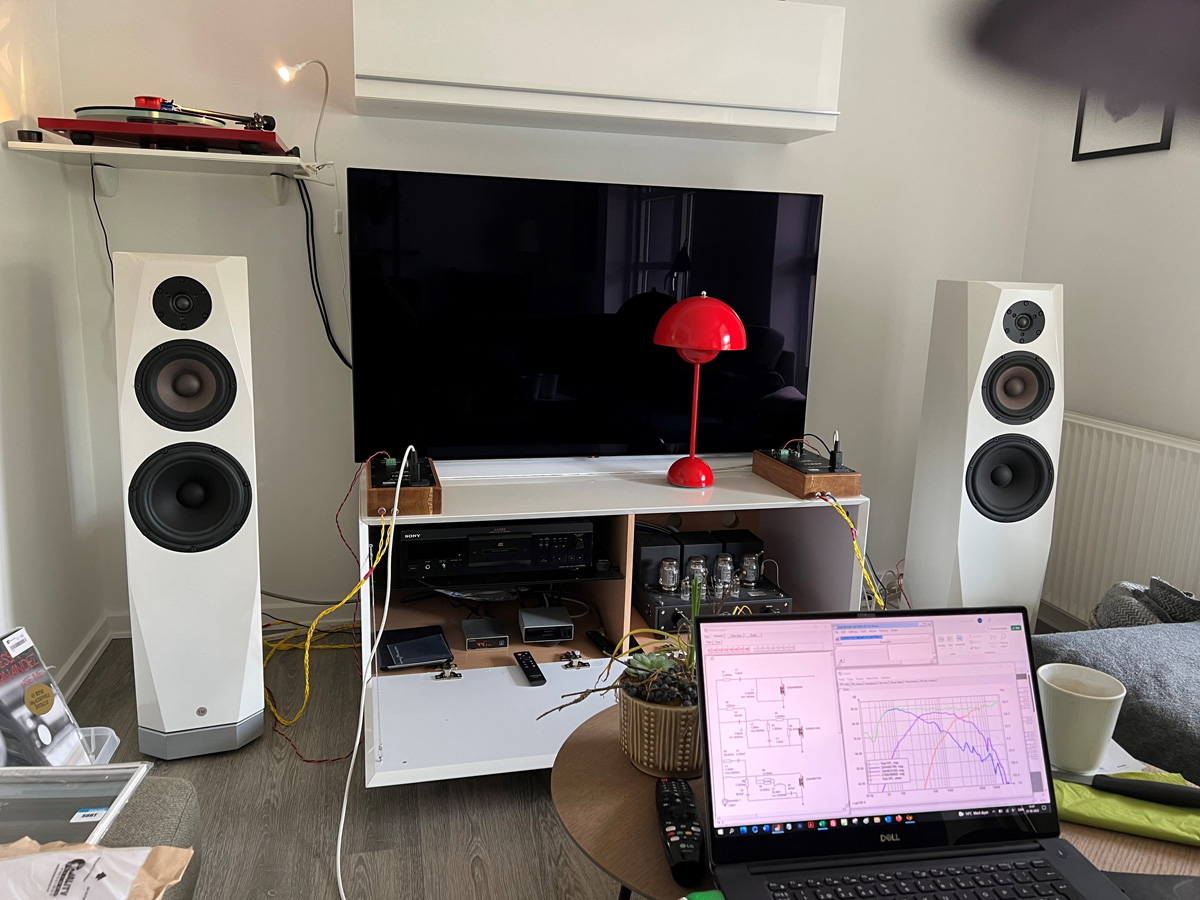
A friend of mine moved to a new house and had to set up his speakers in
a niche of the living room, and the all too common problem for music
lovers was excessive room gain due to nearby boundaries. At very low
levels this worked fine and was a demonstration of the old-time
"loudness" button on Seventies' integrates.
Based on simple simulation, see image below, we're likely to have some
boost of 7 dB around 50 Hz, and indeed it sounds like it. This simple
simulation is in no way the whole truth, but it points clearly to the
problem.
I did not bring my measuring equipment to measure the actual response, as
this can be as misleading as simulation. Measuring bass response
in-room depends on so many things and we can easily be mislead.
For those with digital amplification and room-correction facilities,
this may be trivial, but my friend loves his integrated Line Magnetic
tube amp and would like to keep it that way.
One solution would be to use the tube amp for the mid and tweeter and a
Hypex for the bass. With the low point of crossover between bass and
midrange, this will in no way jeopardize the LM sound. I use this
solution myself in many constructions. Also having the LM amp only
running the mid-tweeter section allows him to use the triode mode all
the time as little power is needed being freed of the bass driver.
So, I brought my two Hypex modules and started programming the three presets to -7, -8.5 and -10 dB @ 50 Hz. The Hypex modules takes the signal from the speaker terminals, so no need for any line signal from the preamplifier - which would not be possible for LM amp.
Speakers are 22W/8851T00 + Wavecor
WF-182-BD10 + D3004/660000. Please DO NOT ask for details.
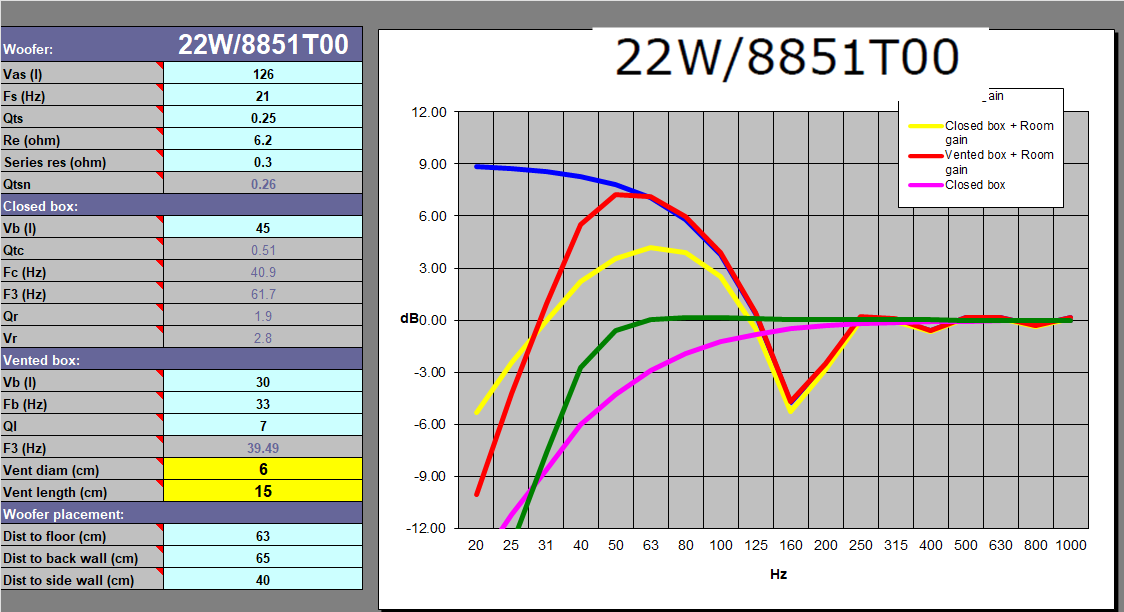
Predicted response from bass calculated from
the distances to nearby boundaries. No, not nice at all!
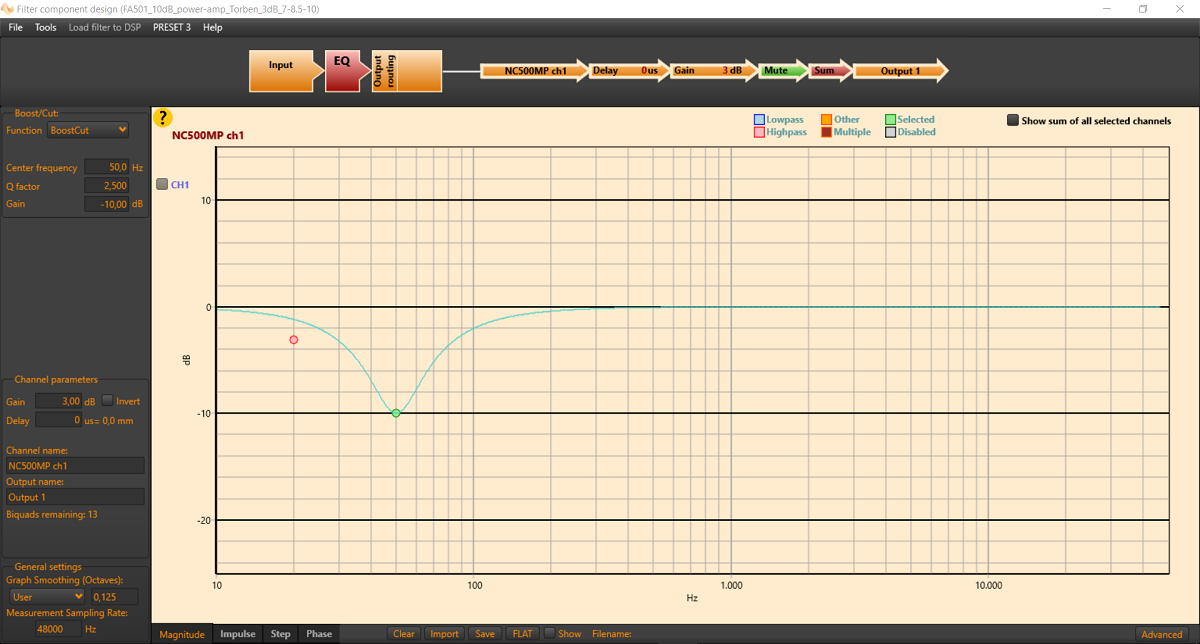
Hypex programming: I use the BoostCut function and set it at minus 10 dB
@ 50 Hz with a Q factor of 2.5.
The Q factor determines how narrow the dip must be and after some
experimenting we settles on 2.5. The higher the Q, the narrower the dip.
The three presets available was set to -7, -8.5 and -10 dB - and
surprisingly -10 dB proved the best and gave and overall balanced bass
response.
Also the overall gain was set to 3 dB making the bass aligned with the
Line Magnetic amp with the Hypex potentiometer set at 12 o'clock. The
"click" position.
I also included a 20 Hz high-pass filter as my friend loves vinyl and
cutting 12 dB/octave below 20 Hz is nice should we accidently drop the
needle on the record.
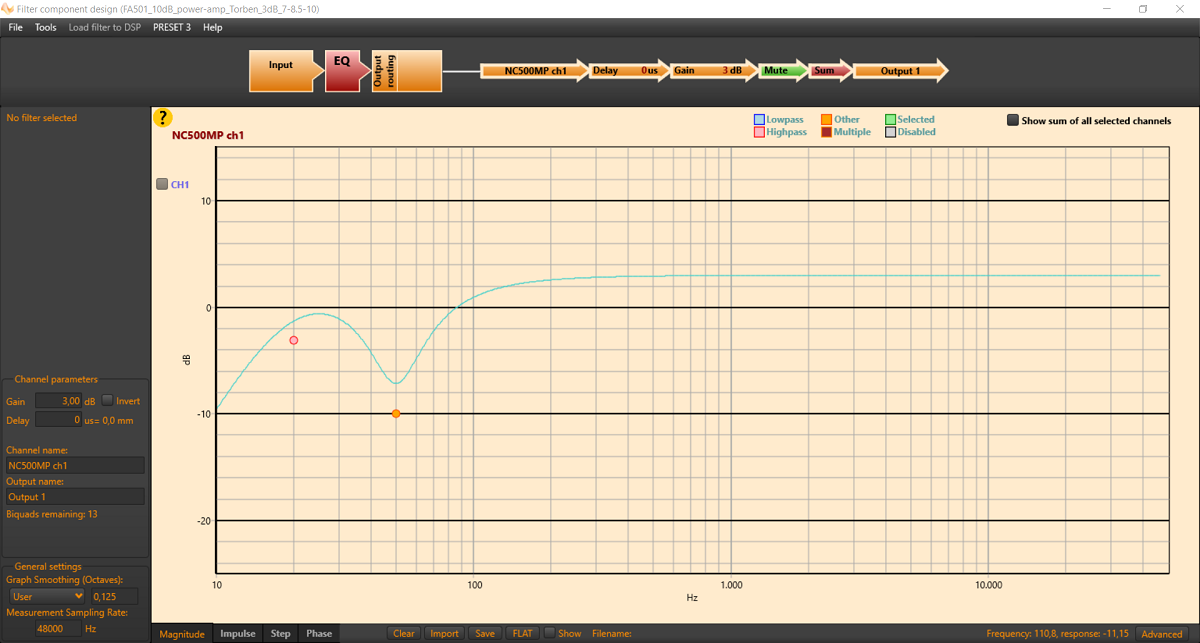
Actual frequency response of Hypex module on
preset 3.
You may ask about the room-related dip at 160 Hz and we may actually try to address this in the future to see if there is something to be gained here. In this case I might actually bring my measuring equipment and see if this is really true. A possible solution may be this:
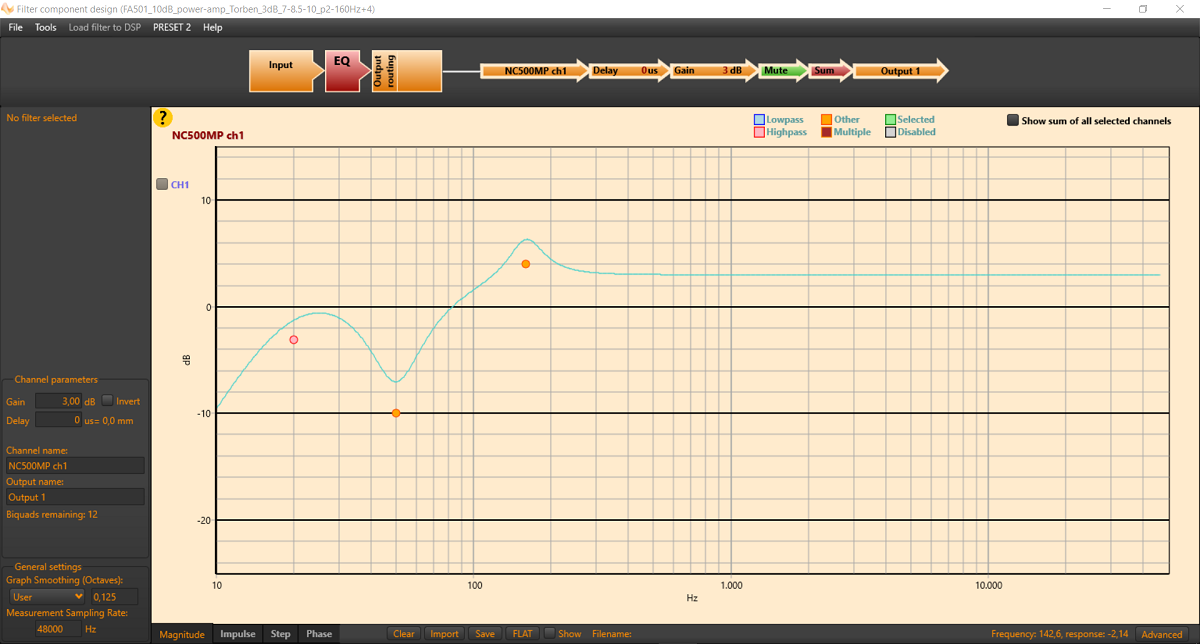
Here +4 dB added at 160 Hz.
This actually did help and male vocals got a more credible fullness.
After this:
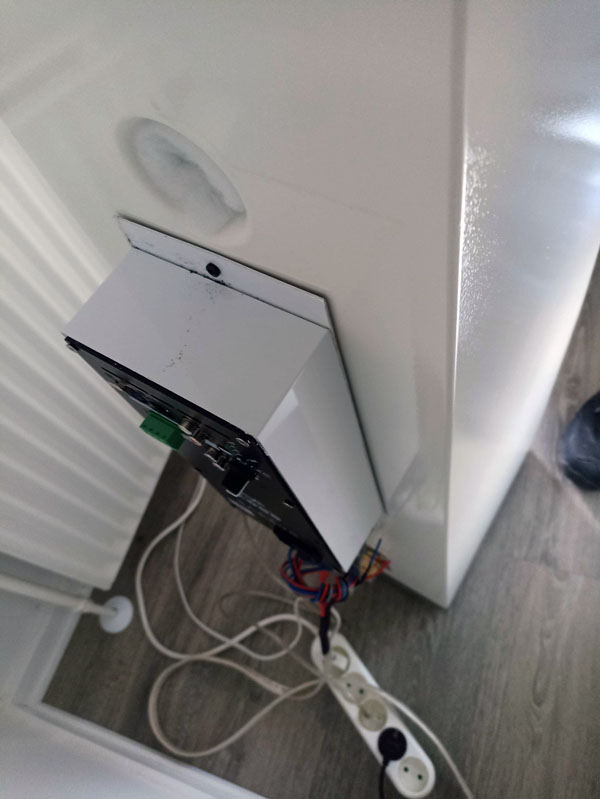
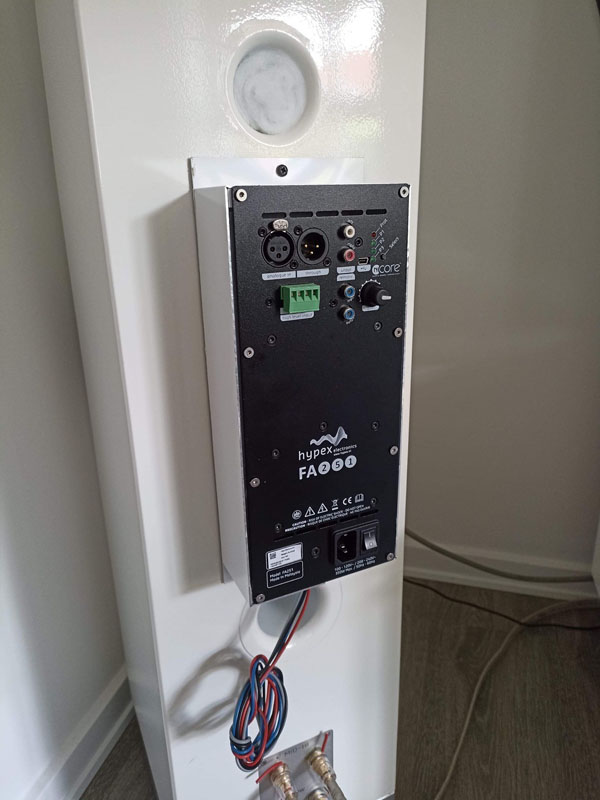
My friend purchased two FA251 modules, made a nice box to the mounted on
the rear and - problem solved.
The change in overall sound has dramatically changed for the better and
my friend can now play loud without being boomed away. Also a much
tighter and solid bass than what - with all respect - the LM tube
amp can manage.